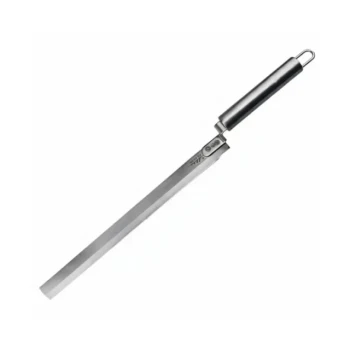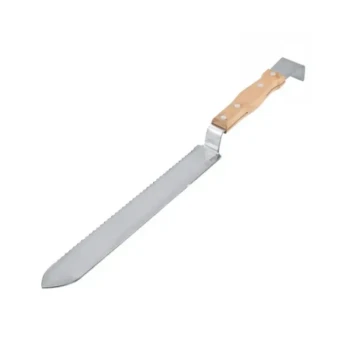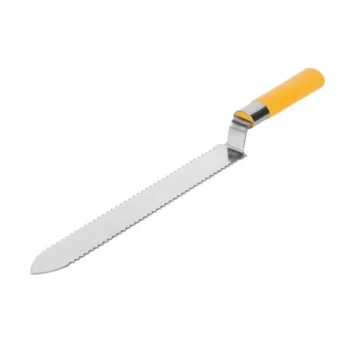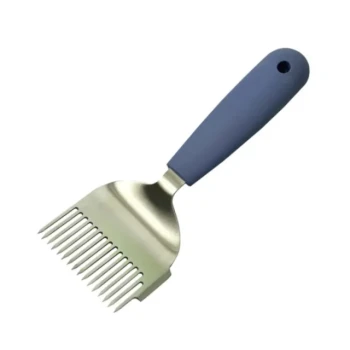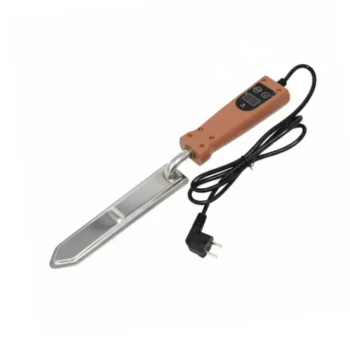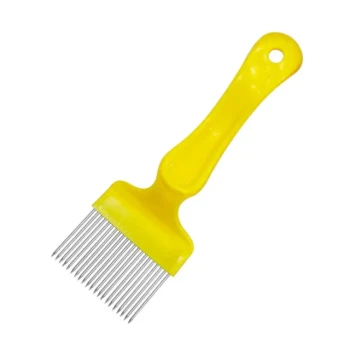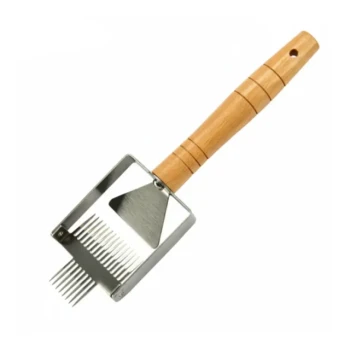The fundamental purpose of comparing the hot knife and heat gun methods is to help a beekeeper select the right tool for their specific honey harvesting goals. This evaluation centers on three critical factors: the speed of the operation, the cleanliness of the extracted honey, and the overall ease of use for the operator.
Choosing an uncapping method is not about finding the single "best" tool, but about aligning the tool's characteristics with the scale of your apiary, your desired efficiency, and your tolerance for post-extraction filtering.
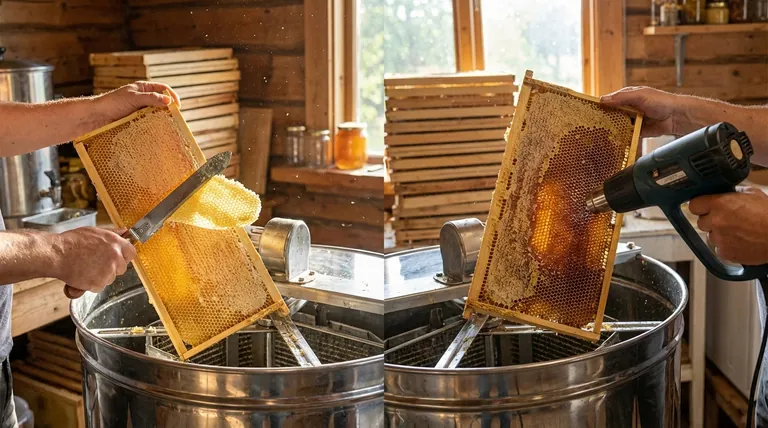
The Core Objective: Cleanly Exposing the Honey
To extract honey from a frame, you must first remove the thin layer of beeswax, known as "cappings," that the bees build to seal each cell. The method you choose to do this directly impacts the entire workflow that follows.
Why Uncapping is Necessary
The wax cappings create a perfect seal, protecting the honey from moisture and contaminants. This seal must be cleanly broken or removed across the entire frame to allow honey to flow out during the extraction process, typically done in a centrifugal extractor.
Two Philosophies: Slicing vs. Melting
The hot knife and heat gun represent two distinct approaches to this task. A hot knife physically slices off the cappings in a single sheet, while a heat gun uses directed hot air to melt the cappings in place, causing them to shrink back and expose the honey.
Evaluating the Hot Knife Method
The electric hot knife is a purpose-built tool and often considered a standard for beekeepers who process a significant number of frames.
Principle of Operation
An electric element heats the blade, which allows it to melt the wax at the point of contact. This enables the knife to glide smoothly through the cappings with minimal physical force.
Key Advantage: Speed and Precision
For beekeepers with many frames to uncap, the hot knife is exceptionally fast. A practiced hand can uncap a frame in just a few smooth passes, providing a very clean and uniform cut.
The Result: Less Wax to Filter
The knife removes cappings in large sheets that fall away from the frame. This results in significantly less free-floating wax mixed in with the raw honey, simplifying the filtering and clarification process later.
Evaluating the Heat Gun Method
Using a heat gun is a less common but viable alternative, appealing to beekeepers for its non-contact approach.
Principle of Operation
A heat gun blows a stream of very hot air that is directed over the surface of the comb. The goal is to apply just enough heat to melt the thin cappings without overheating the honey or the thicker comb structure.
Key Advantage: Less Invasive
Because you are not physically cutting the frame, there is zero risk of slicing too deep and damaging the underlying comb structure. This can be appealing for newer beekeepers who are less confident with a knife.
The Result: Melted Wax Remains
Unlike a knife, a heat gun does not remove the wax. It melts it, causing it to pool on the surface and run down the frame. This wax will inevitably mix with the honey during extraction, potentially requiring more intensive filtering.
Understanding the Trade-offs
Neither method is perfect, and the best choice depends on balancing competing priorities.
Speed vs. Skill
The hot knife offers unmatched speed but requires technique. An unsteady hand can slice too deep, wasting honey and damaging the comb that the bees must rebuild. The heat gun is more forgiving but is generally a much slower process frame by frame.
Upfront Cost vs. Versatility
An electric uncapping knife is a specialized piece of equipment. In contrast, a heat gun is a general-purpose tool that many people already own, potentially lowering the barrier to entry for a hobbyist.
Honey Quality vs. Processing Effort
The hot knife produces cleaner honey straight from the extractor because the cappings are removed beforehand. The heat gun introduces more wax particles into the honey, which must be filtered out. There is also a minor risk of scorching the honey's surface if the heat gun is held too close or for too long.
Making the Right Choice for Your Goal
Select your tool based on the primary outcome you want to achieve during your harvest.
- If your primary focus is speed and efficiency for a large harvest: The electric hot knife is the superior tool for its clean cuts and rapid processing capability.
- If your primary focus is minimizing initial cost for a small apiary: A heat gun can be a practical solution, especially if you already own one for other tasks.
- If your primary focus is preserving comb integrity above all else: The heat gun removes the risk of cutting errors, though a careful technique with a knife can achieve the same result.
Ultimately, the right uncapping tool is the one that seamlessly integrates into your unique harvesting workflow and helps you achieve your goals.
Summary Table:
| Method | Principle | Best For | Key Advantage | Key Consideration |
|---|---|---|---|---|
| Hot Knife | Slices off wax cappings with a heated blade. | Speed, large harvests, clean honey. | Fast, precise, less wax in honey. | Requires skill; risk of comb damage. |
| Heat Gun | Melts wax cappings with directed hot air. | Small apiaries, cost-saving, comb preservation. | Forgiving, no physical contact. | Slower; more wax in honey requires filtering. |
Ready to Optimize Your Honey Harvest?
Choosing the right tool is crucial for a smooth and profitable harvest. At HONESTBEE, we supply commercial apiaries and beekeeping equipment distributors with the high-quality, durable tools they need to succeed.
- For Speed & Efficiency: Explore our range of professional electric uncapping knives.
- For Versatility & Cost-Effectiveness: Inquire about our recommended heat gun solutions.
Let our expertise help you select the perfect equipment for your operation's scale and goals. Contact our wholesale team today to discuss your needs and request a quote!
Visual Guide
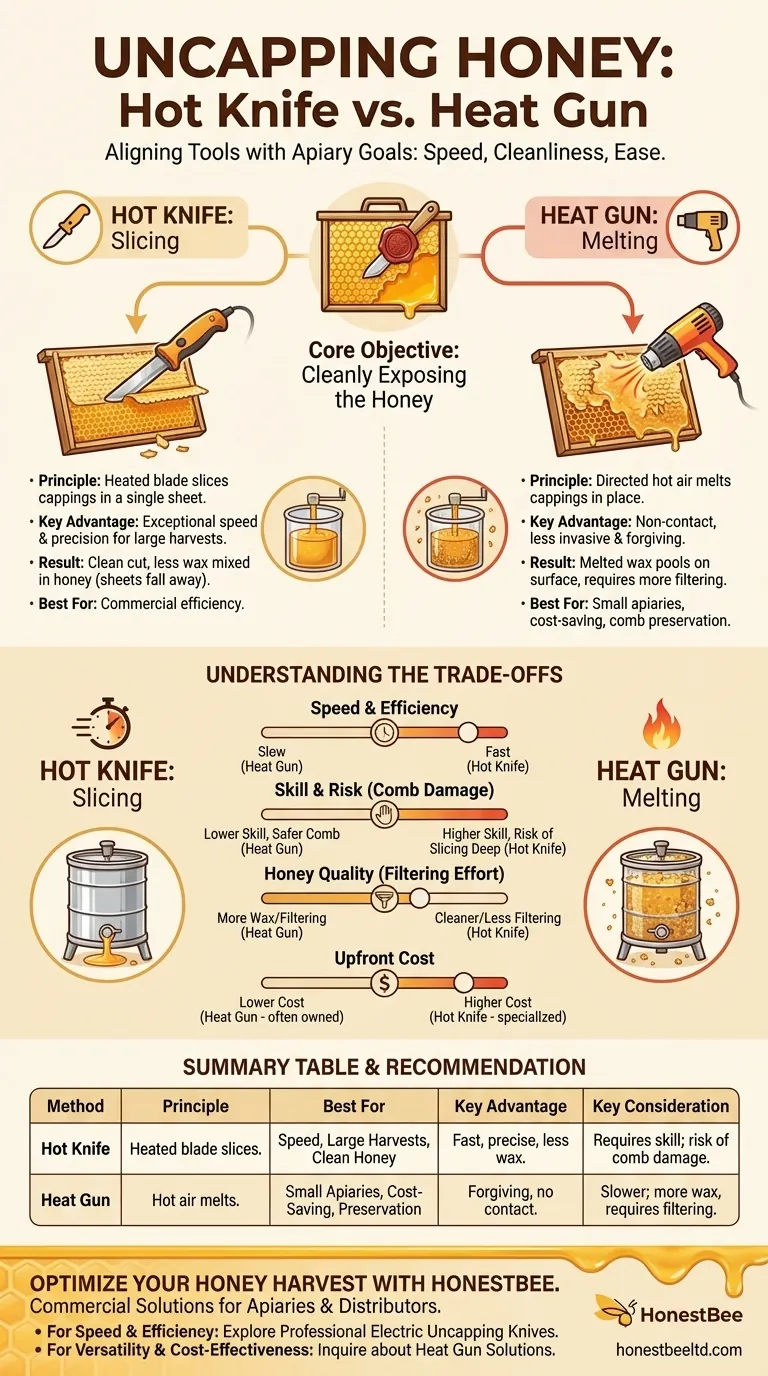
Related Products
- Honeycomb Uncapping Knife for Apiculture
- Professional All-Stainless Steel Uncapping Knife for Beekeeping
- Stainless Steel Dual Blade Uncapping Plane
- Professional Electric Honey Uncapping Knife with Heated Digital Temperature Control for Beekeeping
- Professional Z-Shaped Multi-Function Uncapping Knife for Beekeeping
People Also Ask
- How to clean an uncapping knife? Master the Hot-Knife Method for Easy Maintenance
- What is the use of a bee knife? Essential for Efficient Honey Harvesting
- What is the use of uncapping knife in apiculture? Essential for a Clean, Efficient Honey Harvest
- What is the benefit of the serrated edge on an uncapping knife? Unlock Faster, Cleaner Honey Extraction
- What is the overall recommendation for beginner beekeepers regarding uncapping tools? Master Your First Honey Harvest

